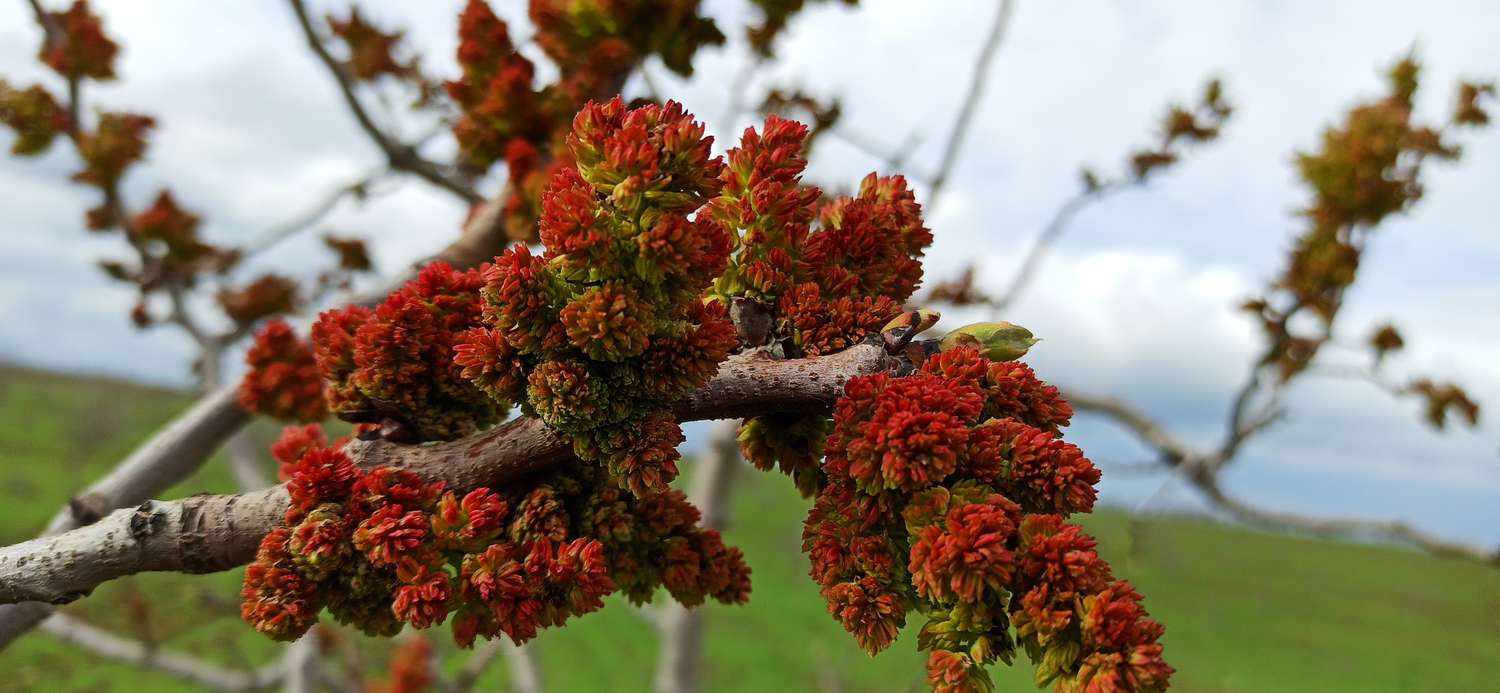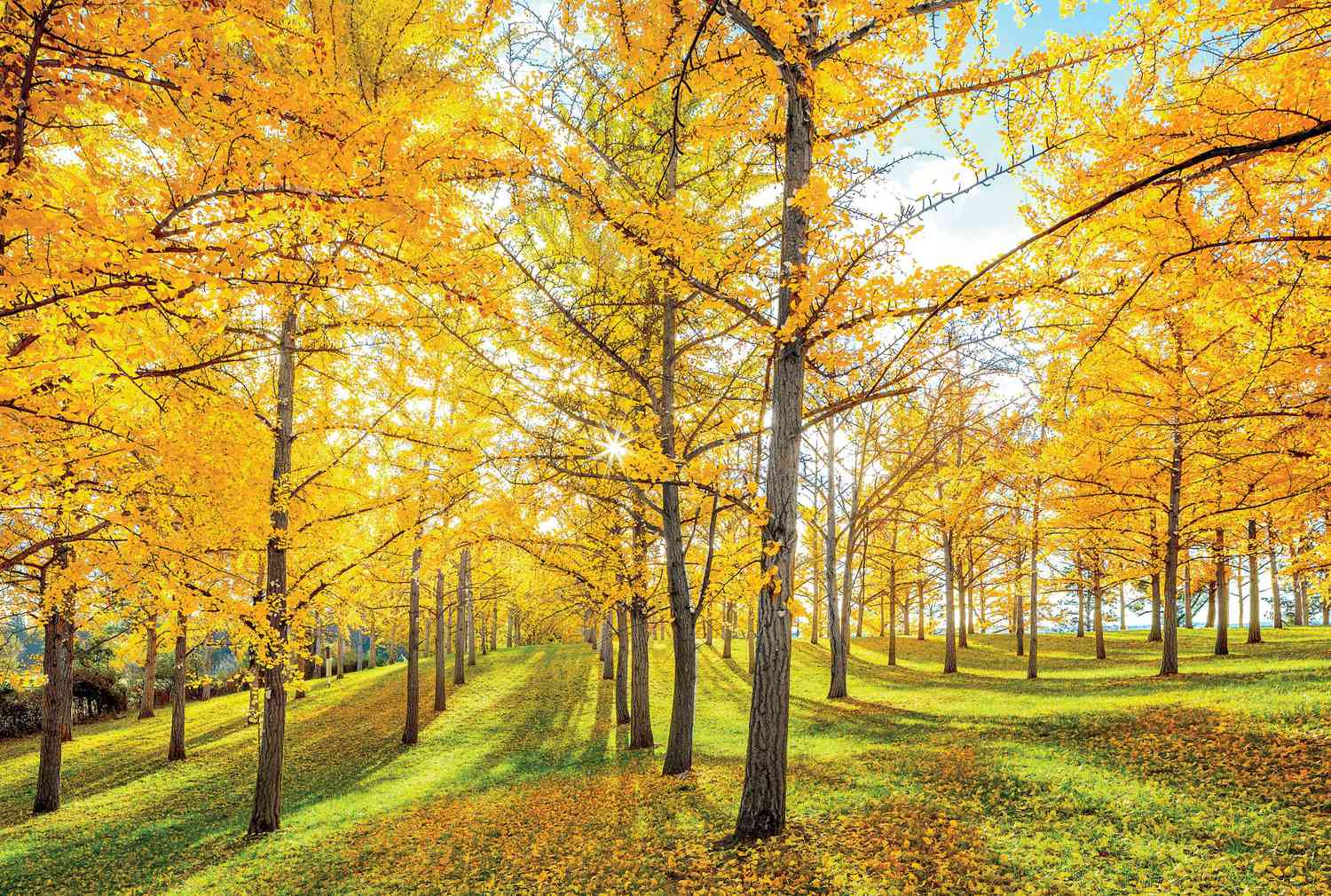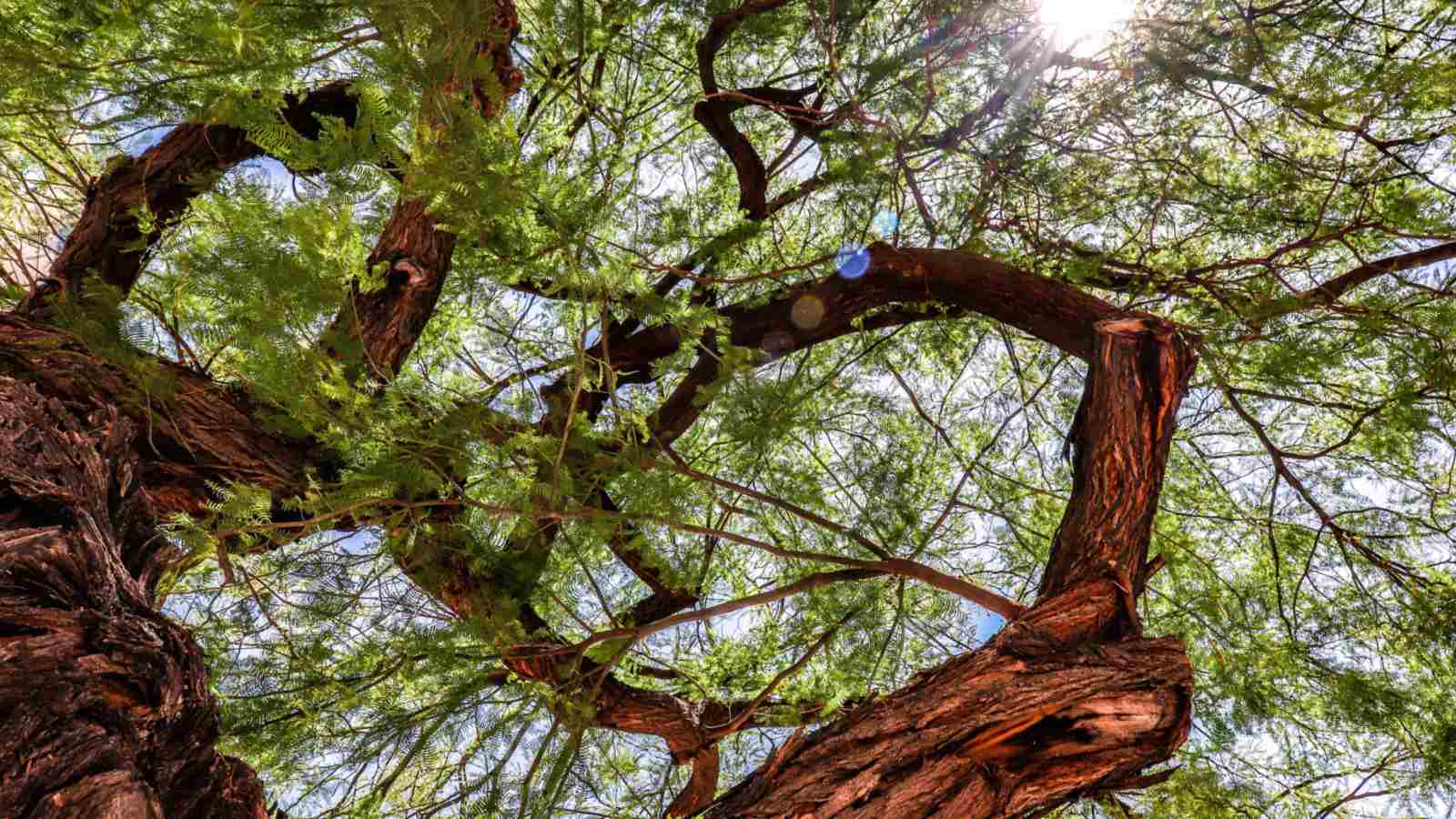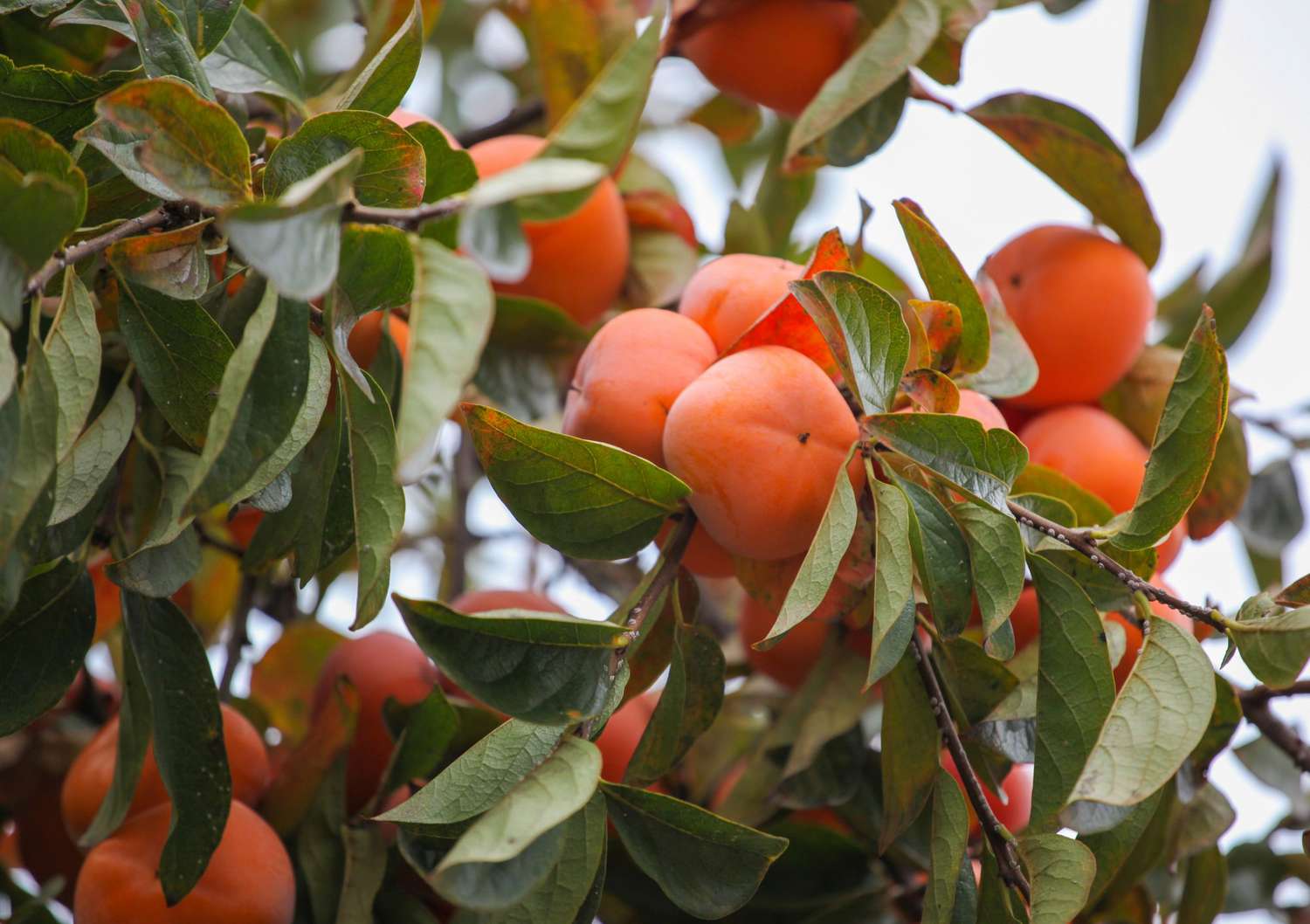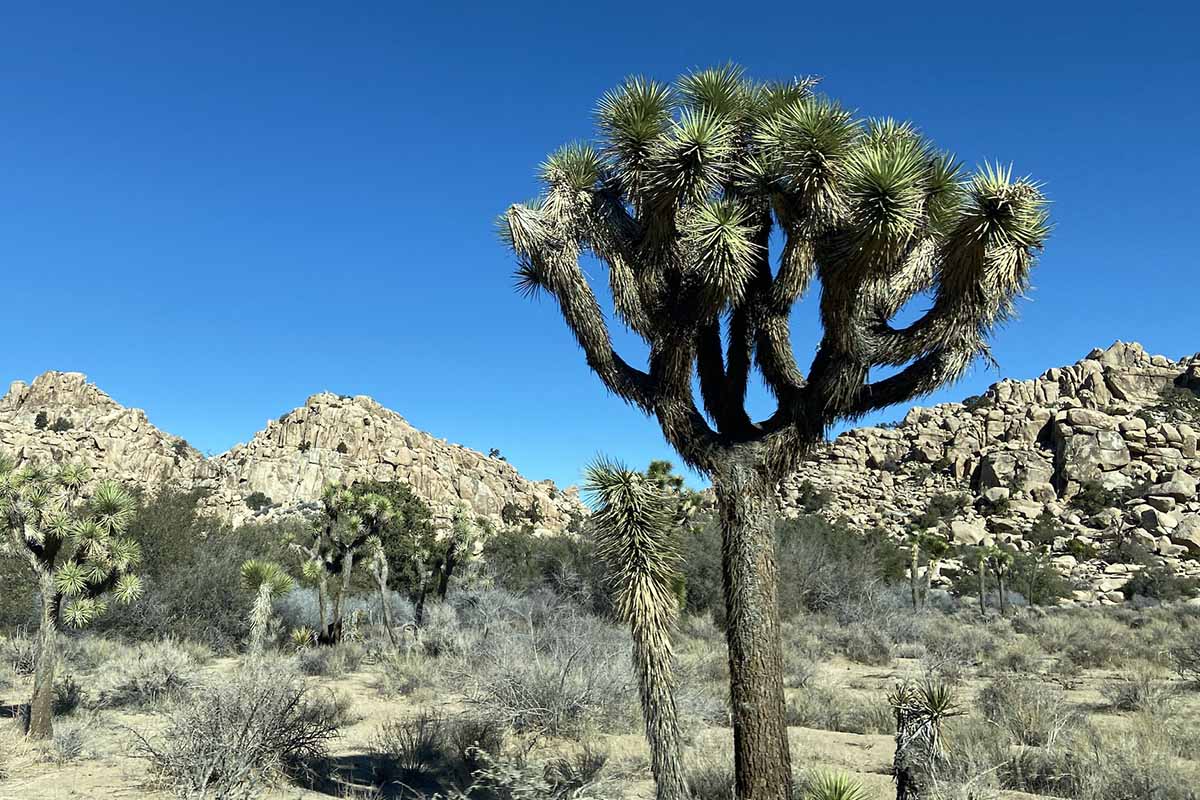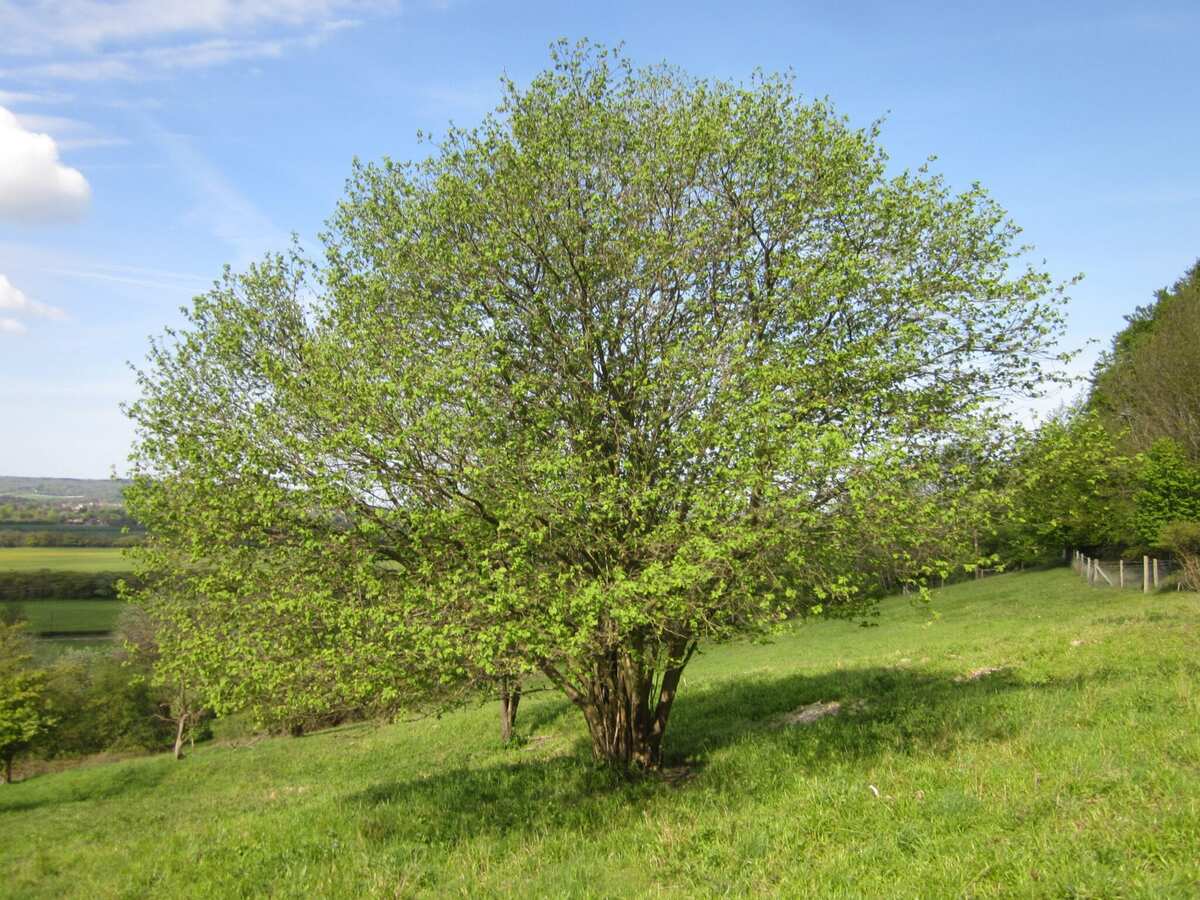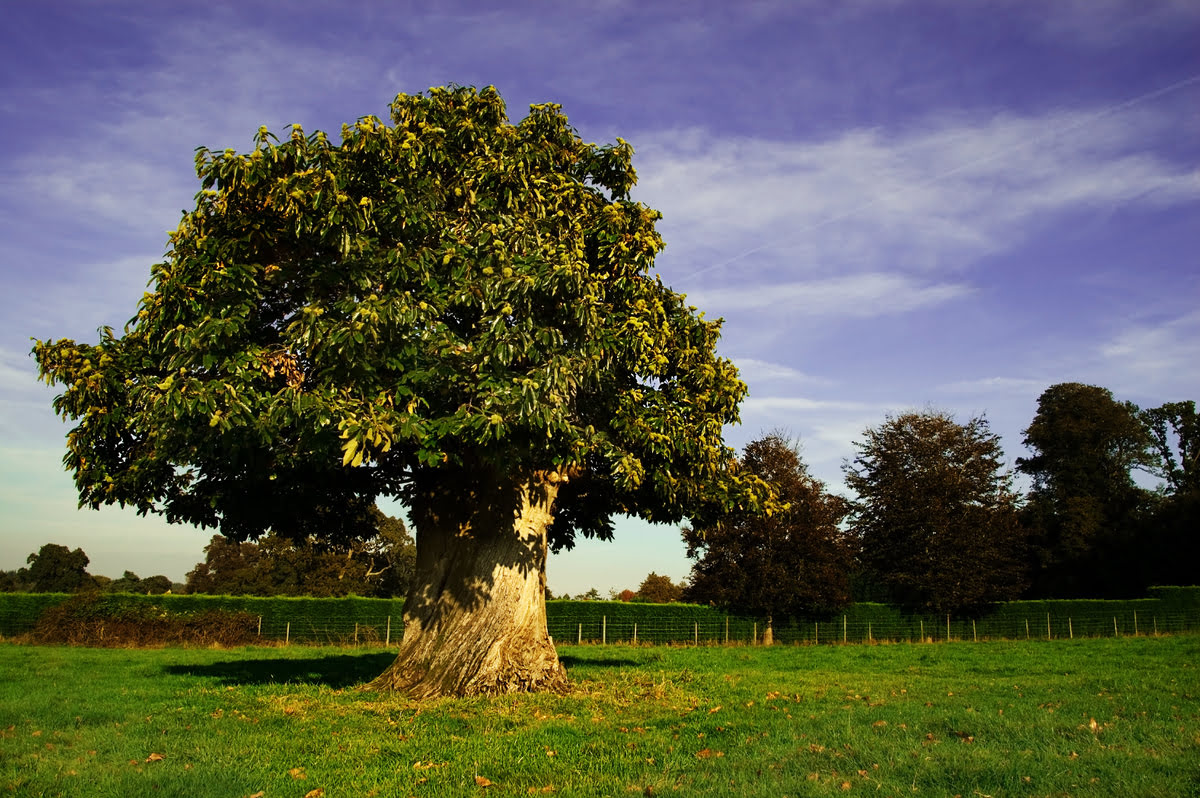Home>Gardening News and Trends>Latest News>Where Do Cashew Trees Grow


Latest News
Where Do Cashew Trees Grow
Modified: February 10, 2024
Discover the latest news on where cashew trees grow and their ideal conditions. Learn about the regions where cashew production thrives and how you can cultivate these versatile trees.
(Many of the links in this article redirect to a specific reviewed product. Your purchase of these products through affiliate links helps to generate commission for Chicagolandgardening.com, at no extra cost. Learn more)
Table of Contents
Introduction
When it comes to the world of nuts, cashews are undoubtedly some of the most popular and versatile options out there. These kidney-shaped nuts, which are native to northeastern Brazil, have become a staple in cuisines all around the globe due to their rich flavor and buttery texture. But have you ever wondered where these delicious cashews come from?
Cashew trees, scientifically known as Anacardium occidentale, are tropical evergreen trees that belong to the family Anacardiaceae. They are renowned for their ability to produce both cashew nuts and cashew apples, each with their own unique characteristics and uses. The cashew nut, which is actually the seed of the cashew fruit, is the main focus of commercial production.
With a long and fascinating history that dates back centuries, cashew trees have found their way to various corners of the world, thanks to human intervention and their adaptability to different climates. Today, they can be found in numerous countries across the globe, creating a global cashew industry worth millions of dollars.
In this article, we will explore the geographical distribution of cashew trees, as well as the climatic and soil conditions necessary for their growth. We will also delve into the cultivation practices, harvesting and processing methods, major cashew-growing regions, challenges faced by cashew farmers, and the economic importance of the cashew industry. By the end, you will have a comprehensive understanding of where cashew trees grow and the significance they hold on a global scale.
Geographic Distribution
The geographic distribution of cashew trees is vast, spanning multiple continents and countries around the world. While cashew trees are not native to all the regions where they are grown today, they have been introduced and cultivated successfully due to their adaptability and economic value.
The native range of cashew trees is centered in northeastern Brazil, where they were first discovered by the Portuguese explorers in the 16th century. From Brazil, cashews were introduced to other parts of the world through colonization and trade routes.
Today, cashew trees are grown in tropical regions with suitable environmental conditions. Some of the major cashew-growing countries include:
- India: India is the largest producer of cashews globally, accounting for approximately 22% of the total production. The coastal regions of the western and eastern parts of the country, such as Kerala, Karnataka, and Odisha, are particularly known for their cashew plantations.
- Vietnam: Vietnam is the second-largest producer of cashews, with a significant portion of its agricultural land dedicated to cashew cultivation. The southeastern provinces, including Binh Phuoc and Dong Nai, are the main cashew-growing regions in Vietnam.
- Nigeria: In Africa, Nigeria holds the title of the highest cashew-producing country. The cashew belt in Nigeria stretches across several states, including Enugu, Benue, and Delta, where favorable climatic conditions support the growth of cashew trees.
- Ivory Coast: Located in West Africa, Ivory Coast is another prominent cashew-producing country. The northern regions of the country, such as Bounkani and Tchologo, have a suitable climate for cashew cultivation and contribute significantly to global cashew production.
- Brazil: While Brazil is the birthplace of cashews, its cashew production has decreased over the years. However, it still remains an important cashew-growing country, particularly in the northeastern states of Ceara and Rio Grande do Norte.
Aside from these countries, other regions where cashews are cultivated include Mozambique, Tanzania, Indonesia, Cambodia, and the Philippines. The distribution of cashew trees is continuously expanding as farmers and growers explore new areas with favorable conditions for cashew cultivation.
The wide geographic distribution of cashew trees ensures a steady supply of cashew nuts and contributes to the global trade and consumption of these popular nuts. The cultivation of cashews in different regions also allows for variations in flavors and qualities, offering consumers a diverse selection of cashew products to enjoy.
Climatic Requirements
Cashew trees thrive in tropical and subtropical climates, with specific temperature and rainfall requirements for optimal growth and nut production. Understanding the climatic conditions necessary for cashew cultivation is crucial for successful farming and establishing cashew plantations.
Temperature:
Cashew trees prefer warm temperatures throughout the year. They can tolerate a wide range of temperatures, but the ideal temperature range for their growth is between 25°C (77°F) and 35°C (95°F). Cashews are sensitive to frost, and temperatures below 10°C (50°F) can cause damage to young leaves, flowers, and developing nuts.
Rainfall:
Rainfall is a critical factor in cashew cultivation, as both too little and too much rainfall can have adverse effects on the growth and development of the trees. Cashew trees require a distinct dry season to initiate flowering and fruiting. They thrive in areas with an average annual rainfall ranging from 900 mm (35 inches) to 1500 mm (60 inches).
Soil Moisture:
While cashews can tolerate drought conditions, they still require a sufficient amount of soil moisture for their growth and development. Well-drained sandy or loamy soils are preferable for cashew cultivation, as excessive water accumulation can lead to root rot and other diseases.
Sunlight:
Cashew trees are sun-loving plants and require plenty of sunlight to promote healthy growth and fruit production. They thrive in areas with full sun exposure, ideally receiving at least 6 to 8 hours of direct sunlight daily.
Altitude:
Cashew trees are typically grown at lower altitudes, below 600 meters (2000 feet) above sea level. However, some varieties have been observed to grow successfully at higher altitudes if the temperature and other climatic conditions are suitable.
It’s important to note that cashew trees are resilient and adaptable, and they can tolerate a certain degree of variation in climatic conditions. However, consistent and favorable temperature, rainfall, and sunlight patterns significantly contribute to better yields and the overall success of cashew plantations.
By understanding and considering the climatic requirements of cashew trees, farmers and growers can select suitable locations for cashew cultivation and employ appropriate cultivation practices to optimize crop productivity and profitability.
Soil Conditions
The choice of soil is crucial for the successful cultivation of cashew trees. Cashews prefer well-drained soils with specific characteristics that promote healthy root development and overall tree growth. Here are the key soil conditions that are optimal for cashew cultivation:
1. Soil pH:
Cashews thrive best in slightly acidic to neutral soil pH levels ranging from 5.5 to 7.0. The pH level is an indicator of soil acidity or alkalinity. Soils with extreme pH levels can affect nutrient availability and hinder optimal tree growth. Regular soil testing is recommended to monitor and adjust the pH levels accordingly.
2. Drainage:
Well-drained soils are essential for cashew trees as they are highly susceptible to root rot and other water-related diseases. Excessive water retention can lead to waterlogged conditions that hinder root development and may even result in tree death. Sandy or loamy soils that allow for proper drainage are often favored for cashew cultivation.
3. Soil Texture:
Cashews thrive in soils with a medium texture, usually a combination of sand, silt, and clay. This type of soil provides a balanced water-holding capacity while allowing for sufficient drainage. Loamy soils are considered ideal for cashew cultivation due to their ability to retain moisture while preventing waterlogging.
4. Organic Matter:
Adequate organic matter in the soil helps improve its fertility, structure, and moisture-holding capacity. Incorporating organic matter, such as compost or well-decomposed manure, into the soil during land preparation can enhance nutrient availability and promote healthy root development.
5. Nutrient Content:
Cashews require a range of essential nutrients for proper growth and development. The soil should ideally have sufficient levels of macronutrients like nitrogen (N), phosphorus (P), and potassium (K), as well as micronutrients like calcium (Ca), magnesium (Mg), and zinc (Zn). Conducting regular soil tests can help determine the soil’s nutrient status and guide the application of appropriate fertilizers.
Proper soil management practices, such as regular irrigation, mulching, and soil conservation measures, are essential to maintain soil health and fertility over time. Additionally, nutrient deficiencies can be addressed through the application of suitable fertilizers based on soil test results.
By ensuring favorable soil conditions, farmers and growers can provide the ideal environment for cashew trees to thrive and maximize nut production. This, in turn, leads to higher yields and better quality cashews, contributing to the overall success and profitability of the cashew industry.
Cultivation Practices
The successful cultivation of cashew trees requires careful planning, implementation of proper cultivation practices, and regular maintenance. Here are the key cultivation practices involved in growing cashew trees:
1. Site Selection:
Choosing the right site for cashew cultivation is crucial. Ideal sites have the right climate, suitable soil conditions, and access to water sources for irrigation. Proper site selection ensures optimal tree growth and nut production.
2. Planting:
Cashew trees are typically propagated through seeds or grafting. Seed propagation is more common, where seeds are planted in prepared seedbeds and nurtured until they reach transplantable size. Grafted seedlings, obtained from selected superior varieties, may also be used for commercial cultivation to ensure desirable traits.
3. Spacing and Planting Density:
Cashew trees require adequate spacing to allow for proper growth and development. The recommended spacing between trees is typically 7 to 10 meters (23 to 33 feet) apart within rows and 10 to 12 meters (33 to 39 feet) between rows. This spacing allows for sufficient light penetration and airflow, reducing the risk of diseases and improving overall tree health.
4. Weed Management:
Weed competition can significantly impact the growth and yield of cashew trees. Regular weed control measures, such as manual weeding, mulching, or the use of herbicides, are necessary to reduce weed interference. Care must be taken to avoid damaging the shallow root system of cashew trees during weed management activities.
5. Irrigation:
While cashew trees can tolerate drought conditions to some extent, irrigation is crucial, especially during the establishment phase and periods of prolonged dry spells. Regular and sufficient irrigation helps promote healthy tree growth, nut formation, and overall productivity.
6. Pruning and Training:
Proper pruning and training techniques are employed to shape the trees, promote good canopy development, improve light penetration, and facilitate harvesting and maintenance activities. Pruning also helps remove diseased, damaged, or overcrowded branches, ensuring overall tree health and productivity.
7. Pest and Disease Management:
Cashew trees are vulnerable to various pests and diseases, including fruit flies, termites, powdery mildew, and anthracnose. Regular monitoring, early detection, and appropriate pest and disease management strategies, such as biological control, cultural practices, and targeted pesticide applications, are necessary to minimize yield losses and maintain tree health.
8. Nut Harvesting:
Cashew nuts are harvested when the cashew apples have ripened and fallen to the ground. The nuts are typically collected by hand, taking care to avoid contact with the caustic shell oil, which can cause skin irritation. After harvesting, the nuts undergo a drying process to reduce moisture content and preserve their quality.
By following these cultivation practices, cashew farmers can optimize tree growth, maximize nut production, and ensure the sustainability and profitability of their cashew plantations.
Harvesting and Processing
Harvesting and processing play a crucial role in the cashew industry to ensure the high-quality production of cashew nuts. This involves careful timing, proper handling, and a series of processing steps to transform the raw cashew nuts into the finished product ready for consumption or further processing. Here is an overview of the harvesting and processing stages:
1. Harvesting:
Cashew nuts are harvested when the cashew apples have ripened and fallen to the ground. Hand harvesting is the most common method, where workers collect the ripe apples and remove the cashew nuts attached to them. Timing is crucial to ensure optimal nut maturity and flavor.
2. Shelling and Drying:
The cashew nuts are enclosed in a hard outer shell, which needs to be removed to access the edible kernel. Traditionally, the shelling process was done manually, which involved carefully cracking the shell using specialized tools. Today, mechanized methods are often used to streamline the process and improve efficiency.
After shelling, the cashew nuts are dried to reduce their moisture content. Drying is essential to prevent spoilage and the growth of mold or fungi. This is typically done by spreading the nuts out under the sun or using specialized drying equipment, ensuring thorough and uniform drying.
3. Roasting and Removal of Testa:
Roasting the cashew nuts helps enhance their flavor and texture. The nuts are typically roasted using hot air or oil, carefully controlling the temperature and duration to achieve the desired taste without overheating or burning the kernels.
After roasting, the cashew nuts undergo a process called “decorticating,” where the protective testa or skin is removed. This is usually achieved by rubbing the roasted nuts against abrasive surfaces or by using mechanical decorticating machines.
4. Grading and Sorting:
Grading and sorting are crucial steps to ensure uniformity in size, color, and quality among the cashew nuts. The nuts are sorted based on their size, typically using sieves or sorting machines. Additionally, visual inspections are conducted to remove any damaged, discolored, or defective nuts.
5. Packaging and Storage:
Once the cashew nuts have been processed and sorted, they are usually packaged in various forms, including vacuum-sealed bags, cans, or bulk containers. Proper packaging is crucial to maintain the freshness and quality of the nuts. The packaged cashew nuts are then stored in a cool, dry place to prevent moisture absorption and maintain their flavor and texture.
It’s important to note that these processing steps may vary depending on the intended use of the cashew nuts. Some nuts may undergo additional processing, such as blanching, salting, or flavoring, to meet specific market demands.
By following careful harvesting and processing practices, the cashew industry ensures the production of high-quality cashew nuts that are enjoyed by consumers worldwide. The resulting cashew products are used in various culinary applications, from snacks and desserts to sauces and nut butters, highlighting the versatility and popularity of this delicious nut.
Major Cashew Growing Regions
Cashew trees are cultivated in numerous countries across the globe, but certain regions have emerged as major players in the cashew industry, with optimal climatic conditions, extensive plantations, and significant contributions to global cashew production. Here are some of the major cashew-growing regions:
1. India:
India is the largest producer of cashews worldwide, accounting for approximately 22% of the total global production. The country’s tropical climate and diverse agro-climatic zones provide favorable conditions for cashew cultivation. The states of Kerala, Maharashtra, Karnataka, and Tamil Nadu are known for their extensive cashew plantations and contribute significantly to India’s cashew production.
2. Vietnam:
Vietnam is the second-largest producer of cashews globally. The country’s warm and humid climate, coupled with vast areas of fertile land, makes it an ideal region for cashew cultivation. Provinces such as Binh Phuoc, Dong Nai, and Ba Ria-Vung Tau are renowned for their cashew plantations and contribute substantially to Vietnam’s cashew industry.
3. Nigeria:
Nigeria is the leading cashew-producing country in Africa and holds a prominent position in the global cashew market. The country’s favorable tropical climate, especially in states like Enugu, Benue, and Delta, supports the growth of cashew trees. Nigeria’s cashew production continues to grow, with efforts to increase the quality and value of its cashew exports.
4. Ivory Coast:
Located in West Africa, Ivory Coast is another significant cashew-growing region. The country’s warm climate and suitable soil conditions in regions like Bounkani and Tchologo contribute to its thriving cashew industry. Ivory Coast focuses on both domestic consumption and cashew exports, with plans to further expand its cultivation and processing capacities.
5. Brazil:
Brazil is the birthplace of cashew trees and has a long history of cashew cultivation. Although its cashew production has declined over the years, Brazil remains a major cashew-growing country. The northeastern states of Ceará and Rio Grande do Norte are known for their cashew plantations, and Brazil continues to play a significant role in the global cashew market.
6. Other Regions:
While the aforementioned regions are key players in the cashew industry, cashew trees are also grown in other countries such as Mozambique, Tanzania, Indonesia, Cambodia, and the Philippines. These regions have suitable climatic conditions and areas dedicated to cashew cultivation, contributing to the global cashew supply.
These major cashew-growing regions collectively supply a significant portion of the world’s cashew nuts, fueling the global cashew industry. The cultivation and production in these regions not only provide employment and income opportunities but also contribute to the countries’ economies and export markets.
Challenges and Diseases
While cashew trees are resilient and adaptable, they are susceptible to various challenges and diseases that can impact their growth, productivity, and overall health. Understanding these challenges and diseases is crucial for farmers and growers to implement effective management strategies. Here are some common challenges and diseases that cashew trees face:
1. Drought and Water Stress:
Cashew trees require a reliable water supply for healthy growth and nut production. Drought and water stress can significantly impact their development, leading to reduced yields and poor tree health. Implementing proper irrigation practices and water management techniques is crucial, especially in regions prone to water scarcity.
2. Nutritional Imbalances:
Imbalances in soil nutrients can negatively impact cashew tree growth and development. Cashews require appropriate levels of macronutrients (nitrogen, phosphorus, potassium) and micronutrients (calcium, magnesium, zinc) for optimal health and productivity. Regular soil testing and the application of appropriate fertilizers can help address nutritional deficiencies and maintain proper nutrient levels.
3. Pests and Insects:
Cashew trees are vulnerable to various pests and insects, including fruit flies, stem borers, aphids, and mites. These pests can cause damage to leaves, flowers, and nuts, leading to reduced yield and quality. Regular monitoring, integrated pest management strategies, biological controls, and targeted pesticide applications are essential for effective pest control.
4. Fungal Diseases:
Several fungal diseases can affect cashew trees, including powdery mildew, anthracnose, and root rot. These diseases can cause leaf discoloration, premature leaf and fruit drop, and overall decline in tree health. Proper sanitation practices, fungicide applications, and cultural practices such as pruning and maintaining good airflow can help prevent and manage fungal diseases.
5. Bacterial Infections:
Cashew trees can also be susceptible to bacterial infections, such as bacterial blight and gummosis. These infections can cause cankers, gumming, and dieback of branches. Implementing preventive measures, such as using disease-free planting material and avoiding injuries to the trees, can help minimize the risk of bacterial infections.
6. Climate Change:
The increasing impact of climate change poses additional challenges to cashew cultivation. Shifts in temperature patterns, extreme weather events, and unpredictable rainfall can disrupt the growth cycle of cashew trees and increase their vulnerability to pests, diseases, and water stress. Developing resilient farming practices and adopting suitable varieties can help mitigate the effects of climate change on cashew production.
Addressing these challenges and diseases requires a comprehensive and integrated approach that combines good agricultural practices, regular monitoring, early detection, and timely management strategies. Additionally, promoting research and collaboration within the cashew industry is crucial for developing innovative and sustainable solutions to overcome these challenges and ensure the long-term viability of cashew cultivation.
Economic Importance
The cashew industry holds significant economic importance, both locally and globally, contributing to employment, trade, and economic growth. Here are some key aspects that highlight the economic significance of cashew cultivation and production:
1. Employment:
Cashew cultivation provides employment opportunities, particularly in rural areas where cashew plantations are prevalent. From farm workers involved in planting, pruning, and harvesting to processors and workers in the cashew processing industry, the cashew sector plays a vital role in creating jobs and supporting livelihoods for millions of people worldwide.
2. Income Generation:
Cashew farming, especially for small-scale farmers, can be a reliable source of income. Cashew nuts are high-value agricultural products, and their sale can provide farmers with a stable and relatively higher income compared to other crops. This income contributes to poverty reduction and economic stability for cashew-growing communities.
3. Export Revenue:
The cashew industry has a significant impact on international trade and export earnings for producing countries. Cashew nuts are demanded globally, and major cashew-growing countries earn substantial foreign exchange through the export of cashew kernels. This revenue helps support national economies and contributes to international trade balances.
4. Value Addition and Processing:
The cashew industry extends beyond cultivation, with value addition through processing. Cashew kernels are processed and used in various industries, including food and snack manufacturing, bakeries, and confectioneries. Processing facilities create additional employment opportunities and add value to the cashew product, enabling higher selling prices and economic benefits for processors and exporters.
5. Economic Development:
Cashew cultivation can foster economic development in regions where it is a key agricultural activity. Investments in cashew plantations, processing facilities, and related infrastructure promote local economic growth, create ancillary industries, and stimulate rural development. This contributes to improving living standards, infrastructure development, and overall economic well-being in cashew-producing regions.
6. Trade Relationships and Market Opportunities:
The global cashew trade fosters economic ties between producing and consuming countries. Cashew exports create opportunities for international trade collaborations, promoting economic relationships and fostering market opportunities for both sides. Importing countries benefit from the availability of cashew products, while exporting countries benefit from access to diverse markets.
The economic importance of the cashew industry cannot be understated. It improves livelihoods, creates employment, enhances trade, and contributes to economic growth for individuals, communities, and nations involved in cashew cultivation and production. With the increasing global demand for cashews, the industry’s economic significance is expected to continue growing in the future.
Conclusion
Cashew trees, with their delicious nuts and versatile uses, have become a global agricultural phenomenon. From their origins in northeastern Brazil, cashew trees have spread to various corners of the world, adapting to different climates and becoming an essential component of the agricultural landscapes in numerous countries.
The geographical distribution of cashew trees encompasses major cashew-growing regions such as India, Vietnam, Nigeria, Ivory Coast, and Brazil, each contributing significantly to the global cashew industry. These regions have favorable climatic conditions and extensive cashew plantations, ensuring a steady supply of cashew nuts to meet the growing global demand.
However, cashew cultivation is not without challenges. Drought, nutrient imbalances, pests, diseases, and the impact of climate change pose threats to cashew trees and their productivity. Proper management practices, including irrigation, fertilization, pest and disease control, and adaptation strategies, are crucial to safeguard cashew plantations and ensure sustainable and profitable cultivation.
Despite these challenges, the economic importance of the cashew industry cannot be understated. Cashew cultivation provides employment opportunities, generates income for farmers, contributes to export revenues, fosters economic development, and creates trade relationships and market opportunities. The cashew industry plays a vital role in poverty reduction, economic stability, and overall economic growth for cashew-growing regions worldwide.
As the global demand for cashews continues to rise due to their popularity and versatility, the cashew industry will continue to evolve. Innovations in cultivation practices, processing technologies, and market strategies will further enhance the economic potential of cashew production and trade. Continued collaboration, research, and sustainable farming practices are essential to ensure the long-term viability and success of the cashew industry.
In conclusion, cashew trees are not only remarkable for their delectable nuts but also for their cultural, economic, and agricultural significance. Understanding where cashews grow, the challenges they face, and their economic importance provides a comprehensive view of this remarkable industry. Appreciating the journey from cashew tree to cashew nut allows us to truly savor the wonders of this global treasure.
